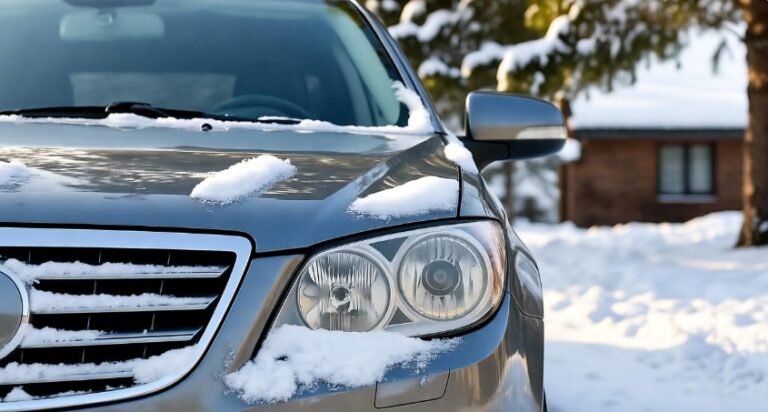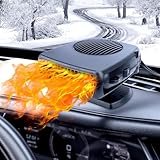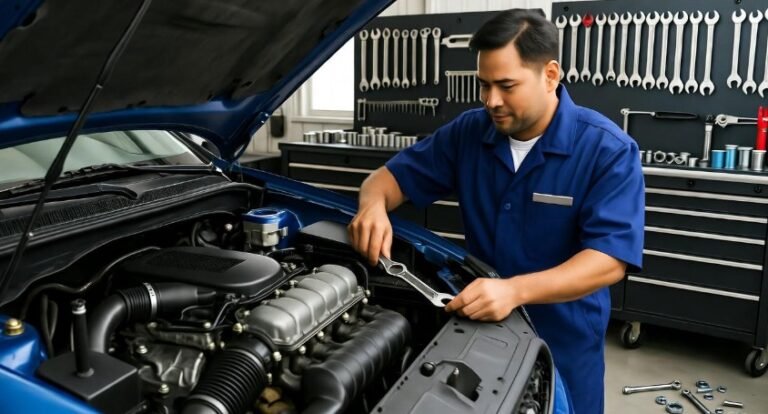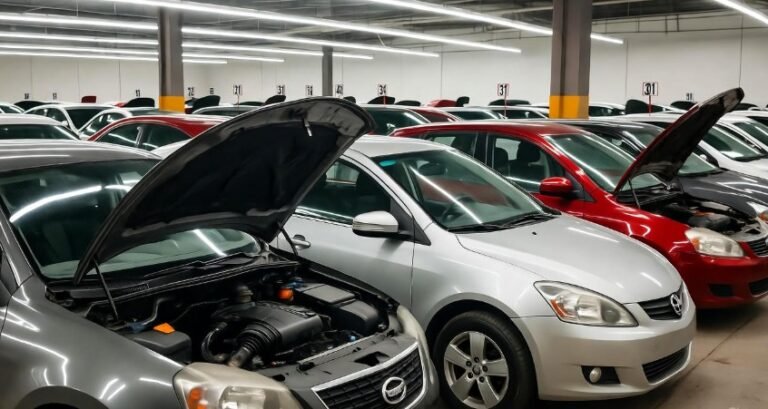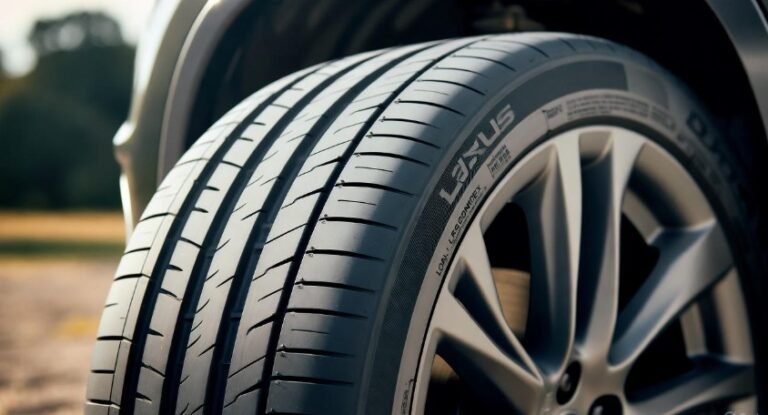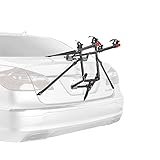Apache RTR 160 Brake Caliper Price: Get Yours!
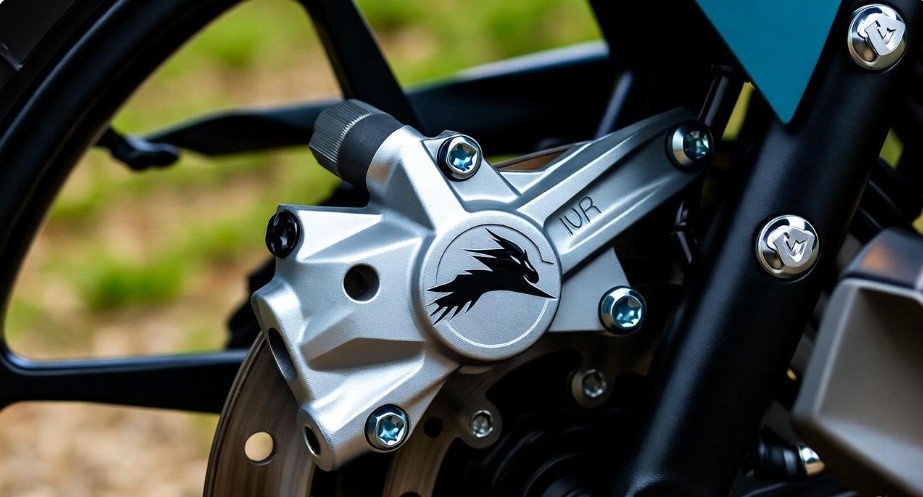
Apache RTR 160 Brake Caliper Price: Your Guide to Getting the Right Part
Key Takeaways
Find Apache RTR 160 brake caliper prices easily.
Understand factors affecting the cost.
Learn where to buy genuine parts.
Discover maintenance tips for your calipers.
Ensure optimal braking performance.
When you’re looking to maintain or upgrade your Apache RTR 160, one crucial component for safety and performance is the brake caliper. Knowing the “Apache RTR 160 brake caliper price” is essential for budgeting your maintenance. This part is vital because it directly interacts with your brake pads to create the friction needed to stop your motorcycle. If your current caliper is worn, damaged, or you’re aiming for an upgrade, this guide will walk you through everything. We’ll break down what influences its cost and where you can find reliable options. Let’s get your Apache RTR 160 stopping power back to its best.
Understanding Your Apache RTR 160’s Brake System
Your motorcycle’s braking system is a marvel of engineering designed to keep you safe. At its heart are the brake calipers. Think of them as the “clamps” that squeeze your brake pads against the rotor. This action is what slows your wheels down. The Apache RTR 160, known for its sporty performance, relies on a robust braking system to match its capabilities.
How Brake Calipers Work
The process is quite straightforward, yet incredibly important:
Leverage: When you squeeze the brake lever, hydraulic fluid is pushed through a line.
Pressure: This fluid pressure acts on pistons within the brake caliper.
Engagement: The pistons move outwards, forcing the brake pads into contact with the brake rotor.
Friction: The friction between the pads and rotor converts kinetic energy into heat, slowing the motorcycle.
The efficiency and condition of your brake caliper directly impact how quickly and effectively you can stop. This is why understanding the “Apache RTR 160 brake caliper price” and ensuring you have a functioning unit is so critical.
What Influences Apache RTR 160 Brake Caliper Price?
The cost of an Apache RTR 160 brake caliper isn’t set in stone. Several factors come into play, from the type of caliper to where you purchase it. Understanding these variables will help you find the best value.
Factors Affecting Brake Caliper Cost
Here are the main elements that can influence the price you’ll pay:
1. Brand and Quality:
OEM (Original Equipment Manufacturer): Parts made by or for TVS (the manufacturer of the Apache RTR 160). These are typically higher quality and ensure a perfect fit but can be more expensive.
Aftermarket Brands: Many reputable aftermarket companies produce brake calipers. Prices can vary significantly based on the brand’s reputation, materials used, and performance claims. Some aftermarket options offer superior performance at a competitive price.
Generic/Unbranded: These are the cheapest but often come with concerns about durability, fitment, and braking performance. It’s generally advisable to avoid these for critical safety components like brake calipers.
2. Material and Construction:
Calipers are usually made from aluminum alloys for a good balance of strength and lightness.
High-performance calipers might use forged aluminum or even titanium for reduced weight and increased rigidity, which will command a higher price.
3. Type of Caliper:
Single-piston vs. Multi-piston: While the Apache RTR 160 likely comes with a standard configuration, performance upgrades might involve switching to a caliper with more pistons. More pistons generally mean more clamping force and better braking, thus a higher price.
Fixed vs. Floating: Most modern bikes use floating calipers for better pad alignment and performance. Fixed calipers are less common on street bikes.
4. Condition (New vs. Remanufactured/Used):
New: The most expensive option, offering guaranteed performance and longevity.
Remanufactured: A good option for saving money. These calipers are rebuilt with new seals and often new pistons, offering near-new performance at a lower cost.
Used: The cheapest but riskiest. You need to be very careful about the condition and inspect thoroughly for damage or wear.
5. Retailer and Location:
Prices can differ between official dealerships, specialized motorcycle parts websites, and general online marketplaces.
Shipping costs and import duties (if applicable) can also affect the final price, especially if ordering from overseas.
Typical Apache RTR 160 Brake Caliper Price Range
Pinpointing an exact “Apache RTR 160 brake caliper price” is challenging without specific details on the model year and desired variant. However, we can provide a general overview based on common market pricing for motorcycle brake calipers.
Price Breakdown for Apache RTR 160 Brake Calipers
Here’s a table illustrating potential price ranges. Please note these are estimates and can fluctuate:
| Caliper Type/Origin | Estimated Price Range (USD) | Notes |
| :———————— | :————————– | :———————————————————————- |
| OEM Front Caliper | $80 – $200+ | Genuine part, perfect fit, guaranteed quality. |
| OEM Rear Caliper | $70 – $180+ | Genuine part, ensures proper function. |
| Aftermarket Performance Front Caliper | $100 – $300+ | May offer improved stopping power, lighter weight, or better aesthetics. |
| Aftermarket Performance Rear Caliper | $90 – $280+ | Similar benefits to front aftermarket upgrades. |
| Remanufactured Caliper| $50 – $150 | Good value, rebuilt with new seals and parts. |
| Used Caliper | $30 – $80 | Risky; requires careful inspection. |
Important Considerations:
These prices often refer to the caliper assembly itself, excluding brake pads, fluid, or mounting hardware unless specified.
Always confirm compatibility with your specific Apache RTR 160 model and year.
Where to Buy Apache RTR 160 Brake Calipers
Finding a reliable source for your Apache RTR 160 brake caliper is crucial. You want parts that are genuine, fit correctly, and will perform as expected to ensure your safety on the road.
Reputable Sources for Motorcycle Parts
Consider these options when searching for your brake caliper:
1. Official TVS Dealerships:
Pros: Guaranteed OEM parts, expert advice, and proper fitment.
Cons: Can be the most expensive option.
How to Find: Use the official TVS Motor Company website to locate authorized dealers in your area.
2. Specialized Online Motorcycle Parts Retailers:
Examples include RevZilla, Cycle Gear, BikeBandit, and part-specific sites that cater to Indian motorcycles.
Pros: Wide selection of both OEM and aftermarket parts, competitive pricing, often have detailed product information and customer reviews.
Cons: You can’t physically inspect the part before buying; rely on return policies.
Tip: Look for retailers that specialize in Asian motorcycle brands or have a good reputation for Apache parts.
3. Major Online Marketplaces:
Platforms like Amazon, eBay, and AliExpress can offer a vast range of calipers at various price points.
Pros: Huge variety, competitive pricing, and frequent sales.
Cons: Requires careful vendor selection and product verification. Counterfeit or low-quality parts are more common here. Always check seller ratings and product reviews meticulously.
Caution: Be extremely wary of unusually low prices. For critical components like brake calipers, sticking with trusted sellers or OEM/well-known aftermarket brands is highly recommended.
4. Local Motorcycle Shops:
Independent repair shops or accessory stores can be great resources.
Pros: Can offer personalized advice, potentially source parts for you, and sometimes have a small inventory of common replacement parts.
Cons: Selection might be limited, and prices may vary.
Pro Tips for Buying Online:
Verify Part Numbers: Always cross-reference the part number on the retailer’s site with your motorcycle’s service manual or a reliable parts diagram for your specific model year.
Read Reviews: Pay close attention to reviews specifically mentioning fitment and performance on an Apache RTR 160.
Check Return Policies: Ensure the retailer has a reasonable return policy in case the part is not compatible or is defective.
Look for Compatibility Guarantees: Some sites offer guarantees that the part will fit your motorcycle.
Replacing Your Apache RTR 160 Brake Caliper: A Beginner’s Guide
While buying a new Apache RTR 160 brake caliper is one step, replacing it might seem daunting. However, with the right tools and a careful approach, it’s a manageable DIY task for many riders.
Tools You’ll Need
Before you start, gather these essential tools:
Wrench Set: For various bolts and nuts.
Socket Set: Including a socket for the caliper mounting bolts.
Brake Bleeder Wrench: A specialized wrench designed for caliper bleeders.
Torque Wrench: Crucial for tightening bolts to the manufacturer’s specifications to prevent damage.
Brake Fluid: The correct type specified for your Apache RTR 160 (check your owner’s manual, often DOT 3 or DOT 4).
Brake Cleaner: To clean components.
Gloves: To protect your hands from brake fluid, which is corrosive.
Safety Glasses: Essential eye protection.
Shop Rags or Paper Towels: For cleanup.
Catch Pan or Bottle: To collect old brake fluid during bleeding.
Optional: C-clamp or brake piston tool for compressing pistons.
Step-by-Step Replacement Process
Here’s a general outline. Always refer to your motorcycle’s service manual for precise instructions specific to your Apache RTR 160 model.
1. Safety First: Ensure your motorcycle is on a stable, level surface, preferably a paddock stand to lift the wheel safely off the ground.
2. Access the Caliper: Locate the brake caliper on the wheel you are working on. It’s usually attached to the fork (front) or swingarm (rear) and sits over the brake rotor.
3. Remove the Caliper:
You’ll typically need to remove one or two mounting bolts that hold the caliper to its bracket.
Once the bolts are out, the caliper should slide off the rotor. You might need to gently pry it open if it’s tight.
Crucially: Do not let the caliper hang by the brake line. Support its weight with a bungee cord or wire attached to the frame or suspension component.
4. Prepare the New Caliper:
Transfer any small parts like banjo bolts or retaining clips from the old caliper to the new one if they aren’t included.
If your new caliper came with new brake pads, remove the old ones from the old caliper and install them in the new one, or install fresh ones if recommended.
Ensure the caliper pistons are retracted. If they are extended, you might need to use a C-clamp or brake piston tool to push them back in carefully. Note: If replacing the caliper, you likely won’t need to retract pistons unless you’re reusing old pads or installing new ones simultaneously.
5. Install the New Caliper:
Slide the new caliper over the brake rotor, ensuring the brake pads engage the rotor correctly.
Reinstall the mounting bolts.
Torque: Use a torque wrench to tighten the caliper mounting bolts to the manufacturer’s specified torque value. This is critical for safety and preventing damage.
6. Reconnect Brake Line (if detached): If you had to disconnect the brake line (usually not necessary for a simple caliper swap unless the line itself is being replaced), ensure seals are properly seated and the banjo bolt is torqued correctly. You will definitely need to bleed the brakes if the line was disconnected.
7. Bleed the Brakes: This is a vital step to remove any air from the hydraulic system.
Locate the bleeder screw on the caliper.
Attach a clear tube to the bleeder screw, with the other end in a catch bottle.
Have a helper squeeze and hold the brake lever.
Open the bleeder screw with your wrench to allow fluid and air to escape.
Close the bleeder screw before your helper releases the brake lever.
Repeat this process, topping up the brake fluid reservoir in the master cylinder as needed, until no air bubbles appear in the fluid and the lever feels firm.
8. Final Checks:
Ensure all bolts are tightened correctly.
Check the brake fluid level in the reservoir.
Pump the brake lever several times to ensure it’s firm before riding.
Clean up any spilled brake fluid immediately, as it can damage paint.
Watch a video tutorial specific to your Apache RTR 160 model if possible to get a visual guide.
Maintaining Your Brake Calipers for Longevity
Proper maintenance of your Apache RTR 160’s brake calipers can extend their lifespan and ensure consistent braking performance. This includes regular checks and cleaning.
Essential Brake Caliper Maintenance Tips
Regular Cleaning: After riding in wet or dirty conditions, clean your calipers with a brake cleaner and a soft brush. Remove any accumulated grime or debris.
Inspect Brake Pads: Check your brake pads for wear regularly. Worn pads can damage the caliper and rotor. Replace them if they are below the minimum thickness specified in your owner’s manual.
Check for Leaks: Periodically inspect the brake lines and caliper seals for any signs of brake fluid leaks. Leaks reduce braking effectiveness and are a safety hazard.
Listen for Noises: Unusual grinding or squealing noises from your brakes can indicate worn pads, debris, or a caliper issue.
Flush Brake Fluid: Brake fluid absorbs moisture over time, reducing its effectiveness and potentially causing corrosion within the system. Follow your owner’s manual recommendations for periodic brake fluid flushes and replacements (typically every one to two years).
Inspect Caliper Pistons: Ensure the pistons move freely. If they are sticking, they may need cleaning or rebuilding.
Torque Checks: Periodically re-check the torque on your caliper mounting bolts, especially after any maintenance.
When to Consider an Upgrade?
While replacing a worn caliper with a new OEM part is standard, many riders consider upgrading their braking system for enhanced performance, especially if they participate in track days or aggressive riding.
Improved Stopping Power: Aftermarket calipers, especially those with more pistons or better designs, can offer significantly improved stopping power.
Weight Reduction: Lighter calipers can contribute to a better power-to-weight ratio for your bike.
Aesthetics: Some aftermarket calipers offer a more aggressive or customized look.
Durability: High-quality aftermarket components might be built to withstand more demanding conditions.
When looking at upgrade options, ensure they are compatible with your existing brake system (master cylinder, brake lines, etc.) and rotor size.
Frequently Asked Questions About Apache RTR 160 Brake Calipers
Got more questions about your Apache RTR 160 brake caliper? Here are some common queries and their answers.
Q1: How often should I replace my Apache RTR 160 brake caliper?
Your brake caliper doesn’t have a fixed replacement interval like a wear item such as brake pads. It should be replaced if it is damaged (e.g., cracked housing, bent piston), seized, leaking significantly, or if its performance is severely degraded and cannot be rectified through cleaning or seal replacement. Regular maintenance can make them last for many years.
Q2: Can I use a brake caliper from a different motorcycle model on my Apache RTR 160?
It’s highly not recommended unless you have verified direct compatibility by part number or have expert confirmation. Different models have different caliper mounting points, piston sizes, and fluid displacement requirements, which need to match your master cylinder and brake line. Using an incompatible caliper can lead to poor braking, damage to your system, or safety risks. Always stick to parts specified for your Apache RTR 160.
Q3: What’s the difference between a front and rear brake caliper price?
Generally, the front brake caliper tends to be more complex and might have more pistons, especially on performance-oriented bikes. This often results in the front caliper being slightly more expensive than the rear one. However, for models like the RTR 160, the price difference might be minimal or non-existent if they use similar designs.
Q4: Do I need to replace the brake pads when I replace the caliper?
It’s highly advisable. When you purchase a new or remanufactured caliper, it may or may not come with new brake pads. If it doesn’t, or if your old pads are worn, it’s the perfect time to install fresh brake pads to ensure optimal performance with your new caliper. This also avoids introducing old, worn pads to a new braking component.
Q5: How can I tell if my brake caliper is failing?
Signs of a failing brake caliper include:
Brake Lever Feels Spongy or Soft: Indicates air in the brake lines or a leak.
Brake Lever Goes to the Handlebar: Severe loss of braking power.
Grinding or Squealing Noises: Could be worn pads or issues with the caliper piston.
Bike Pulls to One Side When Braking: Often a sign of a caliper piston sticking or uneven pad wear.
Visible Leaks: Brake fluid around the caliper or brake line.
Overheating: A caliper that doesn’t release properly can cause brakes to overheat, leading to reduced effectiveness.
Q6: Can I use a universal brake caliper?
While “universal” calipers exist, they are rarely a direct bolt-on solution for specific motorcycle models like the Apache RTR 160. They often require custom adapters for mounting, and their hydraulic specifications might not match your motorcycle’s master cylinder. For safety and performance, it’s always best to use parts specifically designed or listed as compatible with your Apache RTR 160.
Q7: What is the role of brake fluid in a caliper system?
Brake fluid is the hydraulic medium that transmits the force from your brake lever to the caliper pistons. It’s incompressible, which is key to the braking system’s function. The fluid needs to withstand high temperatures generated during braking without boiling, and it must be compatible with the rubber seals within the system. Regular maintenance ensures this fluid is clean and effective.
Conclusion
Understanding the “Apache RTR 160 brake caliper price” is just the first step in ensuring your motorcycle’s braking system is in top condition. Whether you’re looking for an exact OEM replacement or considering an aftermarket upgrade, knowing the factors that influence cost and where to find reputable parts will save you time and money. Remember that your brake calipers are critical safety components. Prioritize quality, proper fitment, and professional installation if you’re not comfortable with the job yourself. By taking care of your brake system through regular maintenance and timely replacements, you’ll ensure confident and safe rides on your Apache RTR 160.

